5 Features for a Stylish Small Bedroom
1. Large Furniture
It might sound counterintuitive, but adding large furniture to a relatively small bedroom helps call attention to the pieces rather than the dimensions of the room, which visually makes the room appear larger.
Here, an armoire takes up a big footprint, but it brings such a large dose of style and soothing tone that it doesn’t feel overwhelming. A custom nook and integrated sconce create a clever alternative to a nightstand.
I recommend going with light neutral colors for large furniture pieces, as they take up less visual weight than dark colors.
Since the bed is usually the biggest piece of furniture in a bedroom, some homeowners try to downplay it by going for a super minimal frame or skipping a headboard. But putting focus on a substantial piece will help enliven the space as a whole.
Then you can build on that piece with other elements that create complementary layers. Notice how the padded and patterned bed frame and headboard here grabs your attention. Then your eye moves around to the similar tones in the grasscloth wallpaper and trim paint. Table lamps coordinate with the bedding. Magenta pillows work with the upholstered bench. And a large area rug pulls all the colors together.
It’s a relatively small room, but the somewhat maximalist approach makes it look much more spacious.
Then you can build on that piece with other elements that create complementary layers. Notice how the padded and patterned bed frame and headboard here grabs your attention. Then your eye moves around to the similar tones in the grasscloth wallpaper and trim paint. Table lamps coordinate with the bedding. Magenta pillows work with the upholstered bench. And a large area rug pulls all the colors together.
It’s a relatively small room, but the somewhat maximalist approach makes it look much more spacious.
2. Dramatic Lighting
Similar to playing with larger pieces, incorporating a dramatic light fixture will help create a focal point that gives the room a finished look. And in a small bedroom, a statement fixture will draw the eye up to give the room the appearance of more space.
Similar to playing with larger pieces, incorporating a dramatic light fixture will help create a focal point that gives the room a finished look. And in a small bedroom, a statement fixture will draw the eye up to give the room the appearance of more space.
This is a beautifully designed bedroom even without the black pendant. But it’s easy to see how the addition of the dramatic fixture takes the room to the next level and helps distract from the tight layout.
3. Colorful Bedding
Whether your bedroom is small, or on the larger side like this one, bold bedding can also be an appealing focal point and keep your eye moving, giving the impression of more space.
As mentioned, your bed will likely be the largest piece in your space. And since much of it is a horizontal plane, it’s a great spot for a visual statement. I like layering one or two bold-colored blankets or duvets with crisp white or other neutral sheets. Use pillows in the same tones to bring the visual layers up to a vertical plane, and add a complementary color to give it some variety.
With this composition in place, you can then play off those colors. This bedroom features just four colors — blue, gray, yellow and white — but the layering, repetition and coordination make it seem like there’s so much more going on.
So when you select your bold bedding colors, be sure to choose other pieces to be in conversation with those colors — like how the chair, pendants, floral wall covering and pillows work together here. Similarly, the blues in the bedding, pillows, rug, bench and throw blanket keep your eye moving.
Whether your bedroom is small, or on the larger side like this one, bold bedding can also be an appealing focal point and keep your eye moving, giving the impression of more space.
As mentioned, your bed will likely be the largest piece in your space. And since much of it is a horizontal plane, it’s a great spot for a visual statement. I like layering one or two bold-colored blankets or duvets with crisp white or other neutral sheets. Use pillows in the same tones to bring the visual layers up to a vertical plane, and add a complementary color to give it some variety.
With this composition in place, you can then play off those colors. This bedroom features just four colors — blue, gray, yellow and white — but the layering, repetition and coordination make it seem like there’s so much more going on.
So when you select your bold bedding colors, be sure to choose other pieces to be in conversation with those colors — like how the chair, pendants, floral wall covering and pillows work together here. Similarly, the blues in the bedding, pillows, rug, bench and throw blanket keep your eye moving.
Bright-colored bedding works especially well in small bedrooms. This bedroom is really tight, but notice how keeping the vertical surfaces in soft beiges allows the green pillows and bed cover to pull your attention to the horizontal surface, making the room feel more spacious.
4. Floor-to-Ceiling Drapes
I’ve already highlighted several elements you want to draw attention to in a bedroom, but I think draperies should be more of a silent — yet still important — support feature.
That’s because I always recommend going with floor-to-ceiling draperies, and since you’re dealing with large, vertical panels, it’s often better to go with a solid neutral color for an unfussy look. Simple rippefolding and allowing the bottom to just “kiss” the floor will give your unassuming draperies a surprising amount of style.
I’ve already highlighted several elements you want to draw attention to in a bedroom, but I think draperies should be more of a silent — yet still important — support feature.
That’s because I always recommend going with floor-to-ceiling draperies, and since you’re dealing with large, vertical panels, it’s often better to go with a solid neutral color for an unfussy look. Simple rippefolding and allowing the bottom to just “kiss” the floor will give your unassuming draperies a surprising amount of style.
Even if you don’t have floor-to-ceiling windows, I recommend installing full-height draperies. This will highlight the height of a room, making it appear taller, rather than calling attention to a short window.
Going full height also creates a more pleasing sleeping environment by blocking more light and muffling noise. Draperies can help insulate a room, too, so it maintains a comfortable temperature.
Going full height also creates a more pleasing sleeping environment by blocking more light and muffling noise. Draperies can help insulate a room, too, so it maintains a comfortable temperature.
To really sell the full-height look, consider a low-profile track known as hospital tracks or KS tracks.
This narrow hardware sits snugly on the ceiling, allowing your panels to touch the ceiling for complete coverage — no annoying bar of sunshine bursting through a gap at the top.
This narrow hardware sits snugly on the ceiling, allowing your panels to touch the ceiling for complete coverage — no annoying bar of sunshine bursting through a gap at the top.
5. Black Walls
All-white walls can help a space feel more open and airy, but sometimes they can have the unintended effect of causing you to lose a sense of balance.
One of my favorite ways to counteract that is by adding a black accent wall behind the bed. This creates the appearance of depth, which can visually pull back the dimensions of a bed sticking out into the room. A black wall can help ground a room otherwise decorated in lighter colors and trick the eye into thinking the space is deeper than it is.
All-white walls can help a space feel more open and airy, but sometimes they can have the unintended effect of causing you to lose a sense of balance.
One of my favorite ways to counteract that is by adding a black accent wall behind the bed. This creates the appearance of depth, which can visually pull back the dimensions of a bed sticking out into the room. A black wall can help ground a room otherwise decorated in lighter colors and trick the eye into thinking the space is deeper than it is.
If your room has no natural light, painting it a bright color can actually make it appear smaller. A black wall will create depth, which will translate into more openness. Notice how the headboard wall in this compact bedroom appears to go on and on like an endless tunnel. Sometimes it’s better to embrace a dark space rather than fight it.
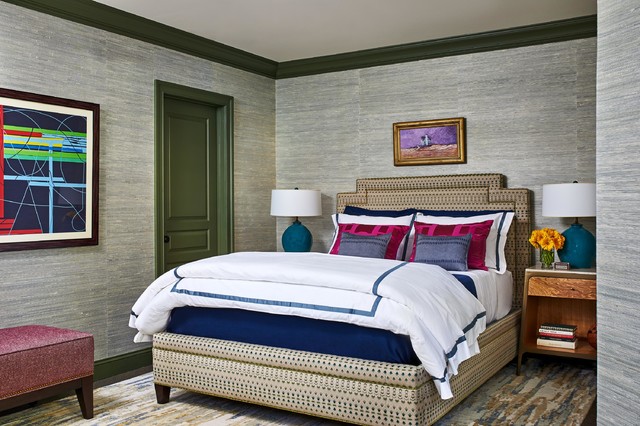
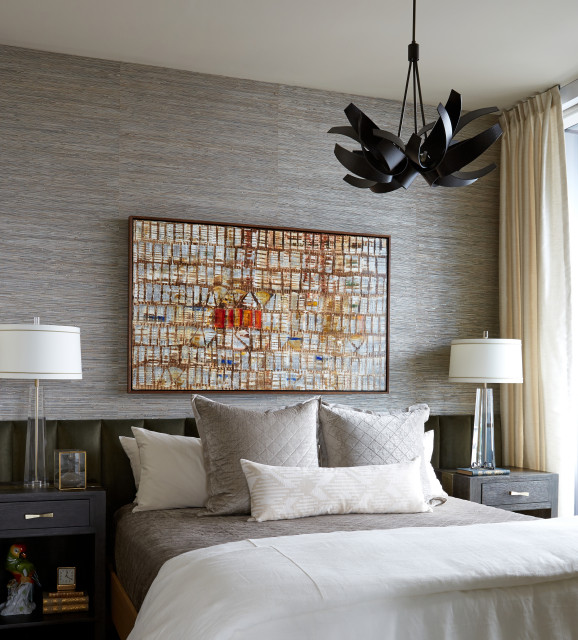
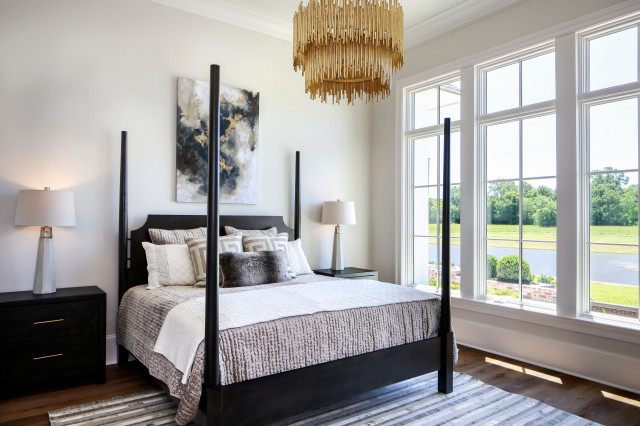
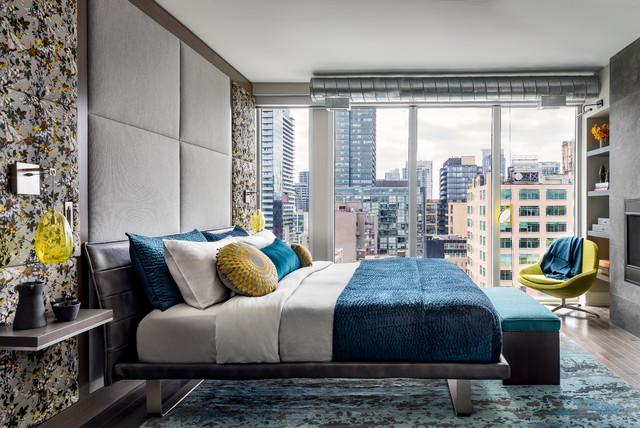
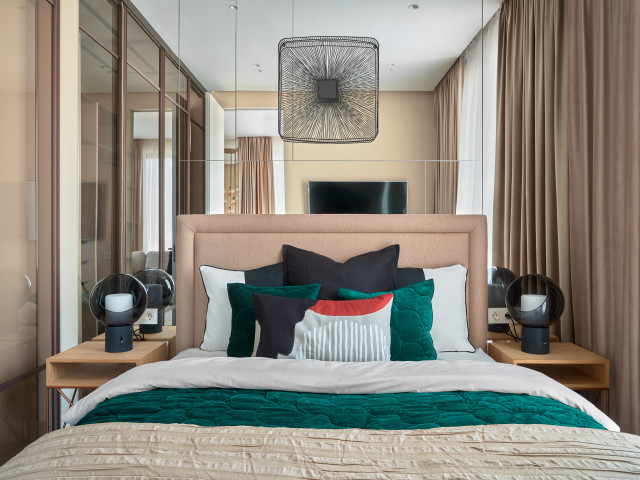
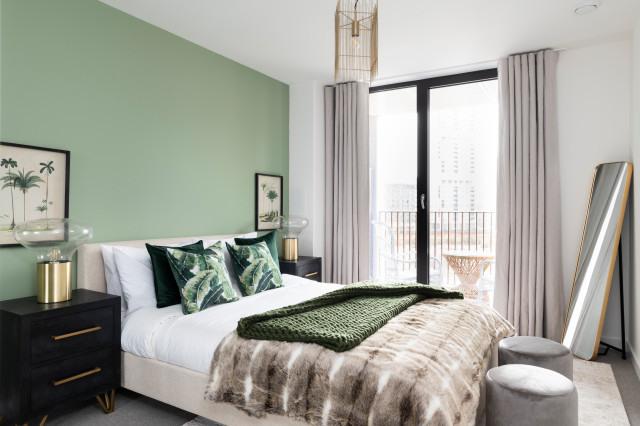

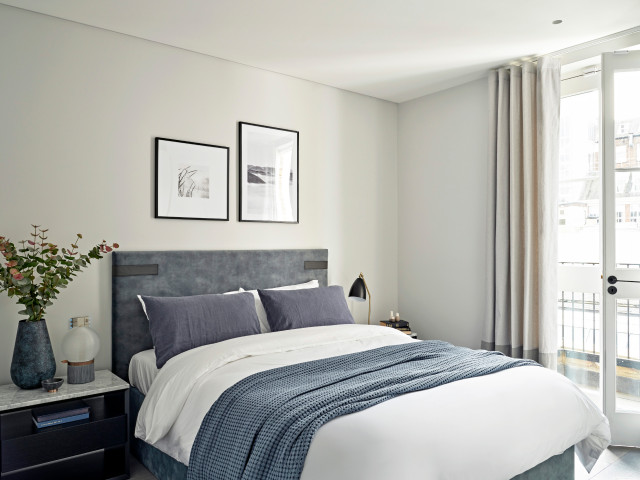

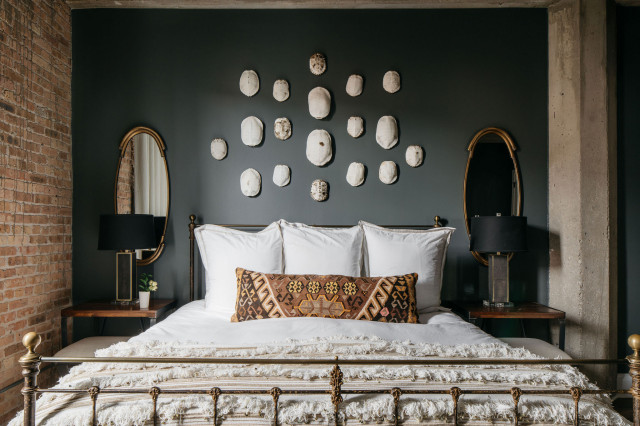
Comments
Post a Comment